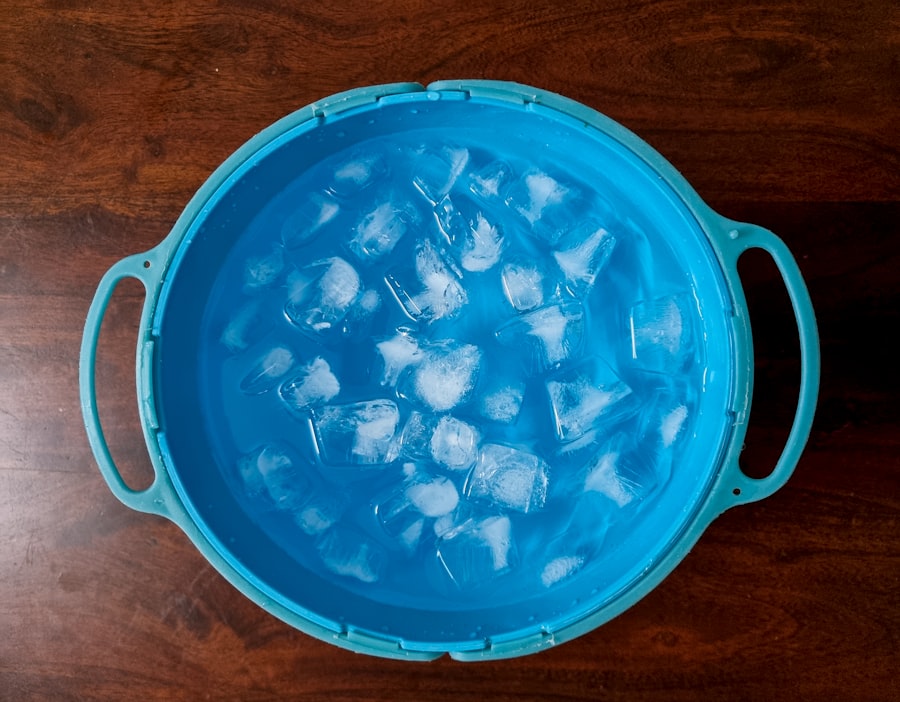As I delve into the world of athletic recovery, I find myself increasingly drawn to the practice of ice baths. This method, often seen as a rite of passage for serious athletes, has gained popularity not only for its physical benefits but also for its mental fortitude. The concept is simple: submerging oneself in cold water, typically around 50 to 59 degrees Fahrenheit, for a set period.
While the initial shock of the cold can be daunting, the potential rewards are compelling enough to make me brave the chill. Ice baths have a long history in sports and rehabilitation, with athletes from various disciplines swearing by their effectiveness. The practice is rooted in the idea that cold exposure can help mitigate the physical toll of intense training and competition.
As I explore the science behind this recovery technique, I am fascinated by how it intertwines with both physiological and psychological aspects of athletic performance. The journey into understanding ice baths is not just about enduring the cold; it’s about unlocking the secrets to optimal recovery and enhanced performance.
Contents
Key Takeaways
- Ice baths involve immersing the body in cold water to aid recovery and reduce muscle soreness after intense physical activity.
- Ice baths can help reduce inflammation in the body, leading to faster recovery and decreased muscle soreness.
- Regular ice baths can lead to enhanced performance and endurance by improving the body’s ability to recover from intense workouts.
- Ice baths have mental health benefits, such as reducing stress and anxiety, and improving overall mood and well-being.
- Incorporating ice baths into training can help prevent injuries by reducing inflammation and promoting faster recovery of muscles and joints.
Recovery and Muscle Soreness
One of the primary reasons I turn to ice baths is their remarkable ability to aid in recovery and alleviate muscle soreness. After an intense workout or competition, my muscles often feel fatigued and achy, a sensation that can linger for days. The cold water immersion works wonders in this regard, as it constricts blood vessels and reduces metabolic activity, which in turn helps to decrease swelling and tissue breakdown.
When I emerge from the ice bath, I often feel a sense of relief, as if my muscles have been rejuvenated. Moreover, research supports the notion that ice baths can significantly reduce delayed onset muscle soreness (DOMS). This phenomenon typically occurs 24 to 48 hours after strenuous exercise, leaving me feeling stiff and uncomfortable.
By incorporating ice baths into my post-workout routine, I have noticed a marked decrease in the intensity and duration of DOMS. The cold not only numbs the immediate pain but also accelerates the recovery process, allowing me to return to training sooner and with greater vigor.
Inflammation Reduction

Inflammation is a natural response of the body to injury or stress, but when it becomes chronic, it can hinder my performance and overall well-being. Ice baths play a crucial role in managing inflammation, providing me with a powerful tool to combat this issue. The cold exposure triggers vasoconstriction, which reduces blood flow to inflamed areas, thereby minimizing swelling and discomfort.
As I sit in the icy water, I can almost feel my body responding positively to this treatment. In addition to immediate relief, regular ice baths can contribute to long-term inflammation management. By incorporating this practice into my routine, I have found that my body adapts more effectively to the stresses of training.
The cumulative effect of reduced inflammation not only enhances my recovery but also allows me to push my limits without fear of overtraining or injury. This balance is essential for any athlete striving for peak performance.
Enhanced Performance and Endurance
| Metrics | Enhanced Performance and Endurance |
|---|---|
| Increased Stamina | Yes |
| Improved Recovery Time | Yes |
| Enhanced Muscle Endurance | Yes |
| Higher Energy Levels | Yes |
The pursuit of enhanced performance is a driving force behind my training regimen, and ice baths have become an integral part of that journey. The physiological benefits of cold exposure extend beyond recovery; they can also improve my overall endurance and athletic capabilities. When I immerse myself in an ice bath, my body responds by increasing blood circulation once I exit the cold environment.
This process helps deliver oxygen and nutrients to my muscles more efficiently, ultimately enhancing my performance during subsequent workouts. Furthermore, studies suggest that regular ice bath sessions can lead to improved cardiovascular function and increased tolerance to physical stress. As I adapt to the cold exposure, I find that my body becomes more resilient, allowing me to endure longer training sessions without succumbing to fatigue.
This newfound endurance translates into better performance during competitions, where every second counts. The mental toughness developed through enduring ice baths also plays a significant role in pushing through physical barriers.
Mental Health Benefits
While the physical advantages of ice baths are well-documented, I have come to appreciate their profound impact on mental health as well. The initial shock of cold water can be a jarring experience, but it also serves as a powerful mental challenge. Each time I step into an ice bath, I confront discomfort head-on, which fosters resilience and mental fortitude.
This practice has taught me that I am capable of enduring more than I initially believed. Moreover, the endorphin release triggered by cold exposure contributes to an improved mood and reduced feelings of anxiety or stress. After a session in the ice bath, I often emerge feeling invigorated and refreshed, as if I have shed not only physical fatigue but also mental burdens.
This dual benefit—physical recovery coupled with mental clarity—makes ice baths an invaluable component of my overall wellness strategy.
Injury Prevention

Injury prevention is a critical aspect of any athlete’s journey, and ice baths have proven to be an effective tool in this regard. By reducing inflammation and promoting faster recovery, I find that I am less prone to injuries that can derail my training progress. The cold exposure helps maintain muscle elasticity and joint mobility, which are essential for preventing strains and sprains during intense workouts.
Additionally, incorporating ice baths into my routine allows me to listen to my body more effectively. When I feel signs of fatigue or discomfort creeping in, I know that a session in the ice bath can help mitigate those issues before they escalate into more serious injuries. This proactive approach not only keeps me on track with my training goals but also instills a sense of confidence in my ability to manage my physical health.
Immune System Boost
The immune system plays a vital role in overall health and athletic performance, and I have discovered that ice baths can provide a significant boost in this area as well. Cold exposure has been shown to stimulate the production of white blood cells, which are essential for fighting off infections and illnesses. By regularly incorporating ice baths into my routine, I feel more resilient against common colds and other ailments that could disrupt my training schedule.
Moreover, the stress response triggered by cold exposure can enhance my body’s ability to adapt to various stressors over time. This adaptation not only strengthens my immune system but also improves my overall resilience—both physically and mentally. As an athlete, maintaining optimal health is crucial for achieving peak performance, and ice baths have become an essential part of my strategy for staying healthy throughout the year.
How to Incorporate Ice Baths into Training
As I consider how best to incorporate ice baths into my training regimen, I recognize that timing and frequency are key factors. Typically, I aim to schedule ice baths immediately after intense workouts or competitions when my muscles are most in need of recovery. This immediate application maximizes the benefits of cold exposure while minimizing soreness and inflammation.
In terms of duration, I usually start with shorter sessions—around 5 to 10 minutes—and gradually increase the time as my body adapts to the cold. It’s important for me to listen to my body during these sessions; if I start feeling excessively uncomfortable or numbness sets in beyond what feels normal, I know it’s time to exit the bath. Additionally, pairing ice baths with other recovery techniques such as stretching or foam rolling enhances their effectiveness.
Ultimately, incorporating ice baths into my training routine has been a transformative experience. The combination of physical recovery benefits and mental resilience gained from enduring the cold has made me a stronger athlete overall. As I continue on this journey, I remain committed to exploring new ways to optimize my performance while prioritizing my health and well-being through practices like ice bathing.
Ice baths have long been a popular recovery method for athletes, helping to reduce muscle soreness and inflammation after intense workouts. For those interested in exploring the benefits and techniques of cold immersion further, the article on how to adjust to cold plunge therapy offers valuable insights. It provides guidance on acclimating to cold temperatures and maximizing the therapeutic effects of cold water immersion, making it a great resource for both beginners and seasoned athletes looking to enhance their recovery routines.
FAQs
What is an ice bath for athletes?
An ice bath, also known as cold water immersion or cryotherapy, is a recovery technique used by athletes to reduce muscle soreness and inflammation after intense physical activity.
How does an ice bath work?
The cold temperature of the water constricts blood vessels and reduces blood flow to the muscles, which helps to decrease inflammation and swelling. It also numbs the nerve endings, providing pain relief.
What are the benefits of taking an ice bath?
Some potential benefits of taking an ice bath for athletes include reduced muscle soreness, faster recovery, decreased inflammation, and improved circulation.
How long should an athlete stay in an ice bath?
Athletes typically stay in an ice bath for 10-15 minutes, although some may stay in for longer periods. It is important to monitor the skin and limit exposure to prevent frostbite.
Are there any risks or side effects associated with ice baths?
Potential risks and side effects of ice baths include frostbite, skin damage, and decreased muscle strength. It is important to use caution and consult with a healthcare professional before using this recovery technique.
When is the best time for athletes to take an ice bath?
Athletes can benefit from taking an ice bath immediately after intense physical activity, such as after a long run or a strenuous workout. This can help to minimize muscle soreness and aid in recovery.
This website may contain affiliate links. As an affiliate, we may earn a commission from qualifying purchases at no additional cost to you.

